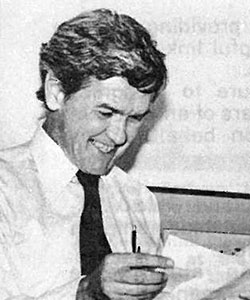Capturing and maintaining audience attention
is a complex
challenge for marketers.
One approach to this challenge is the curiosity gap:
the
space between what we know now and
what we want—or need—to know.
What is the Curiosity Gap?
Using the curiosity gap in marketing is a psychological maneuver to get a prospect or customer to feel a strong urge to close the gap between
what they know and what they want to know. This gap creates a sense of intrigue
and a need for closure, prompting members of your target audience to seek out
the missing information. It can be strategically used to entice audiences to
engage with content, click on links, and ultimately convert into customers.
Before we get into the finer details, here are a few examples of how you might have seen the curiosity gap in use:
- This simple habit could dramatically boost your
productivity, but almost everyone overlooks it.
- We tested 10 popular skincare products, but only one gave
shocking results.
- Discover the one kitchen ingredient that could revolutionize
your health—most people have it in their pantry, but almost no one knows its
secret power.
Why Does the Curiosity Gap Work?
- Human Nature: At its core, the curiosity gap taps into a
fundamental aspect of human nature—the desire for knowledge and understanding.
When presented with a piece of information that hints at something more, people
are naturally inclined to seek out the full story.
- Engagement: By creating content that leaves questions
unanswered, marketers can drive engagement. This technique encourages users to
interact with the content, whether by clicking on a link, watching a video, or
reading an article.
- Retention: Once engaged, audiences are more likely to stay
invested in the content to find the answers they seek. This increased retention
can lead to higher time-on-page metrics and lower bounce rates, both of which
are beneficial for SEO and overall user experience.
How to Leverage the Curiosity Gap in Marketing
- Craft Compelling Headlines: Headlines are often the first
point of contact between your content and your audience. Use headlines that
pique curiosity without giving away the whole story. For example, instead of
saying "10 Tips for Better Sleep," you might say "10 Simple
Tricks That Will Change the Way You Sleep."
- Tease, Don’t Reveal: In your content, provide enough
information to intrigue but hold back just enough to make the reader want to
know more. This can be done through teasers, summaries, or introductions that
hint at the valuable information to come.
- Use Visuals: Visual content, such as images and videos, can
also be used to create a curiosity gap. A thumbnail that hints at exciting
content or a video preview that teases the main event can compel viewers to
click through and watch the full content.
- Segment Information: Break your content into smaller,
digestible parts and reveal them sequentially. This approach can keep audiences
engaged over a longer period, as they continually return for the next piece of
information.
- Interactive Elements: Use quizzes, polls, and other
interactive elements to create a curiosity gap. For example, a quiz that
reveals results only after completion can drive engagement as users are eager
to find out their outcomes.
- Storytelling: Incorporate storytelling techniques that build
suspense and leave key points unanswered until later in the narrative. This
keeps readers hooked as they follow the story to its conclusion.
Examples of the Curiosity Gap in Action
- BuzzFeed Quizzes: BuzzFeed is recognized for its quizzes that
promise to reveal something about the user—"Which Celebrity Are You?"
or "What’s Your True Age?" Users are driven by curiosity to complete
these quizzes to find out their results.
- Teaser Trailers: Movie studios often release teaser trailers
that provide just enough information to pique interest without giving away the
plot. This strategy builds anticipation and excitement ahead of the full
trailer or movie release.
- Email Marketing: Subject lines that create curiosity can
significantly improve open rates. For example, an email subject like "You
Won’t Believe What We’ve Discovered" entices recipients to open the email
to satisfy their curiosity.
The curiosity gap is a powerful tool in the marketer’s
arsenal, capable of driving engagement, increasing retention, and ultimately
converting audiences. By understanding and strategically implementing the
curiosity gap, marketers can create content that not only attracts attention
but also maintains it, leading to more effective and successful marketing
campaigns. As with any strategy, it's essential to balance intrigue with value,
ensuring that once the curiosity gap is bridged, the audience feels satisfied
and enriched by the information provided.






